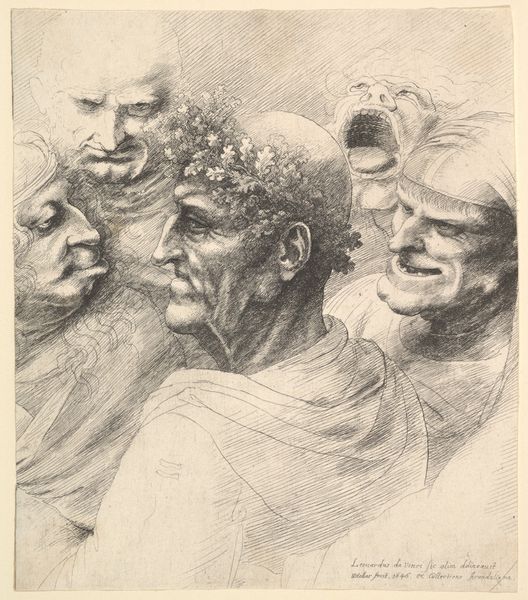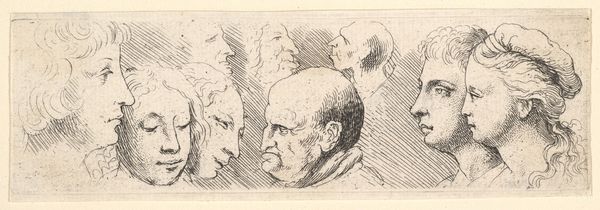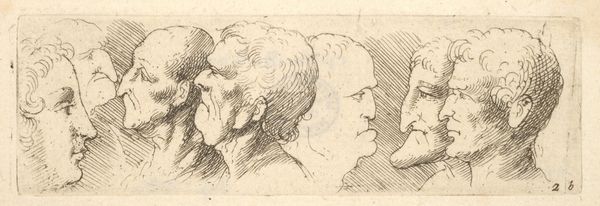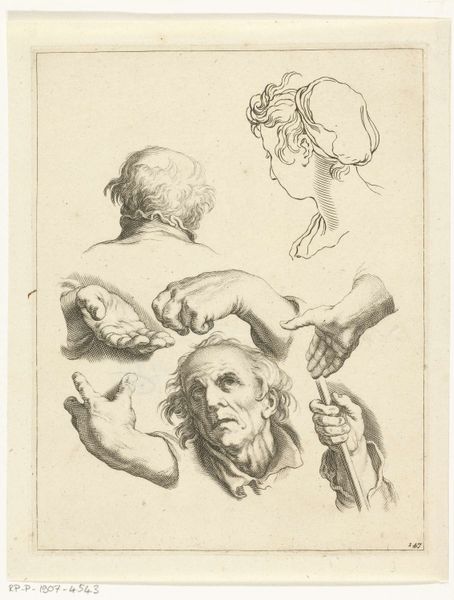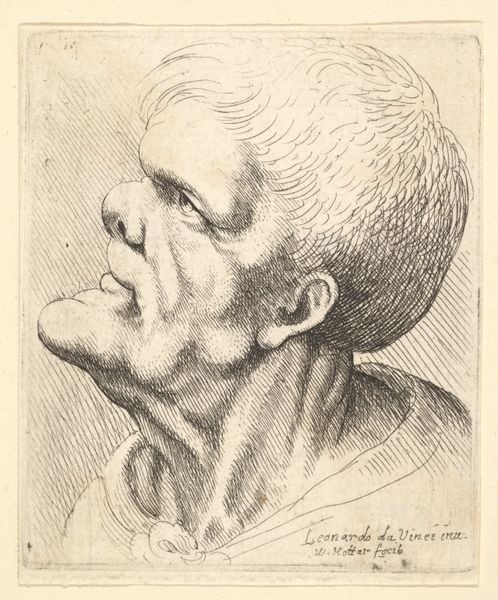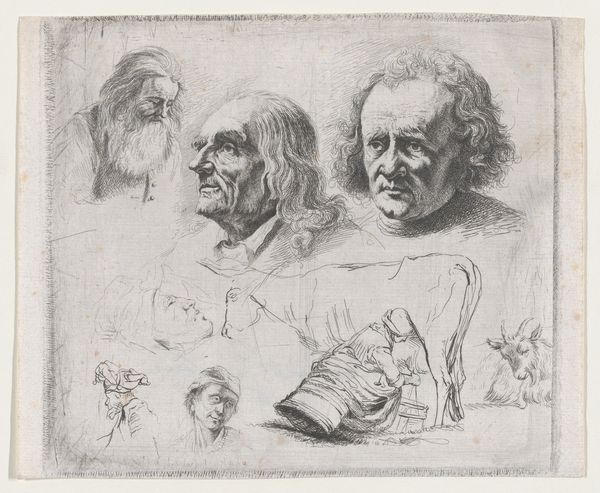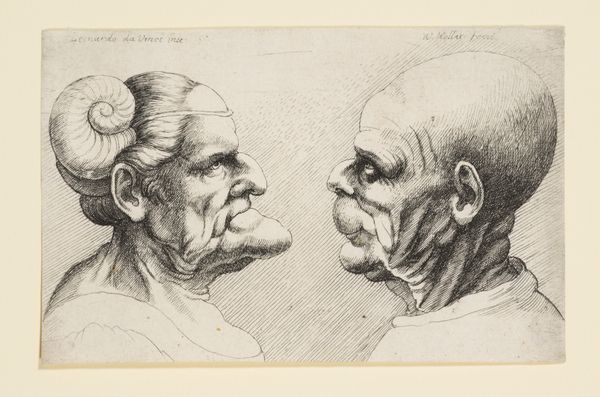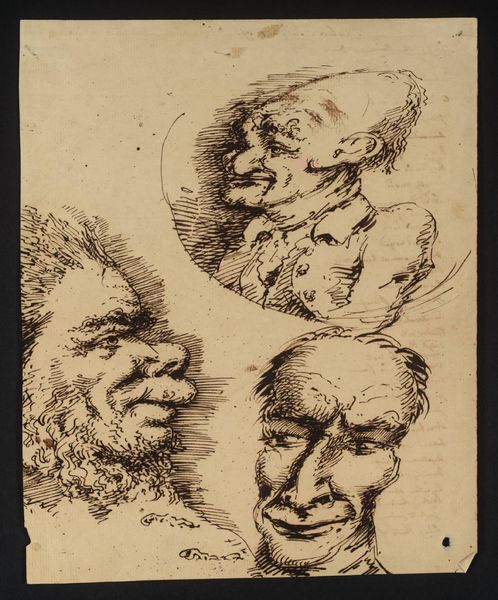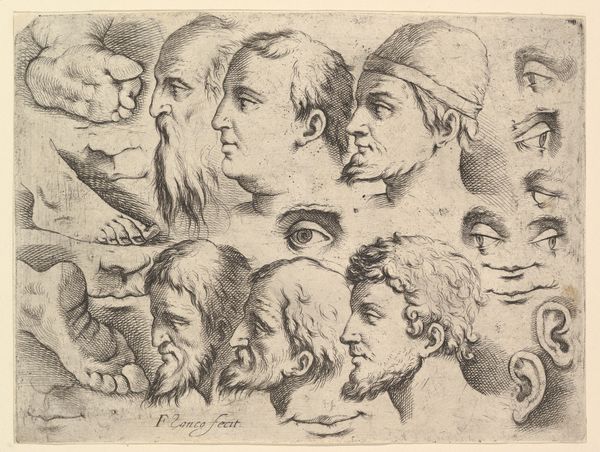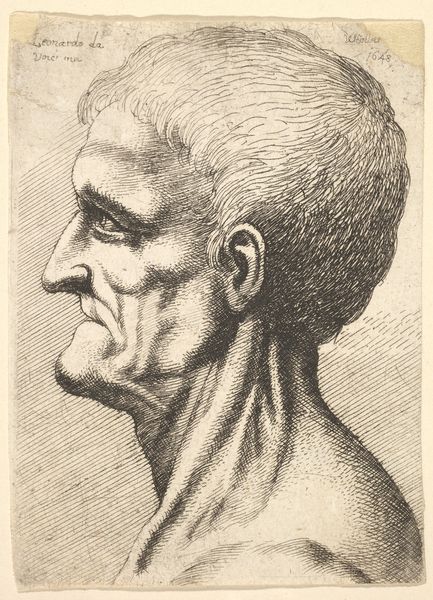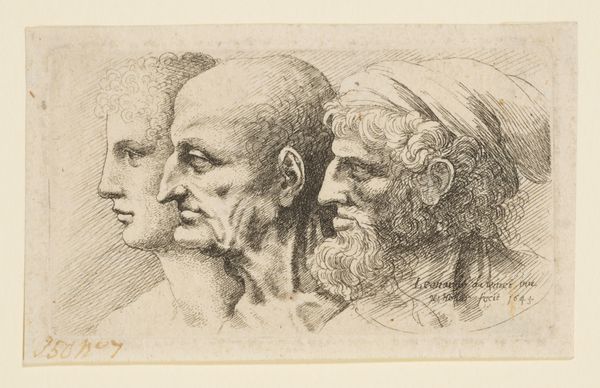
Four grotesque heads in profile to left 1644 - 1652
0:00
0:00
drawing, print, engraving
#
portrait
#
drawing
#
baroque
#
head
# print
#
figuration
#
men
#
line
#
portrait drawing
#
history-painting
#
academic-art
#
engraving
Dimensions: Sheet: 2 9/16 × 1 3/4 in. (6.5 × 4.4 cm)
Copyright: Public Domain
Editor: This is Wenceslaus Hollar’s "Four Grotesque Heads in profile to left," dating from 1644 to 1652. It's a print, an engraving, and I find it... well, honestly, quite unsettling. How do you interpret this work, considering its historical context? Curator: These “grotesque heads” are copies after drawings by Leonardo da Vinci, who was fascinated by physiognomy, the idea that one could judge a person's character from their outward appearance. Do you think this idea of judging individuals based on appearances had cultural significance during Hollar's time? Editor: Absolutely. It seems like these exaggerated features almost caricature certain personality traits or social standings. Like, the bulbous noses or the heavy jowls. Curator: Precisely! In the 17th century, ideas about race, class, and gender were often visually coded. Prints like this circulated widely and perpetuated these harmful stereotypes, reinforcing social hierarchies and biases. The print format itself made these images highly reproducible, amplifying their reach. Editor: So, what might have been scientific curiosity for da Vinci took on a more problematic tone through Hollar’s prints? Curator: Exactly. We can analyze how the re-contextualization of these heads becomes a tool in upholding social hierarchies and perhaps solidifying discriminatory practices through easily disseminated imagery. The grotesque then, becomes not just about the aesthetic but the social and political body. What do you think? Editor: That definitely shifts my perspective. I was focused on the almost comical exaggeration, but I see how it reflects a darker side of how society categorized people. Curator: It reveals how artistic and scientific interests become entangled with broader systems of power, identity and historical inequalities. This really highlights the crucial role that art plays in shaping perceptions. Editor: This has really shown me the importance of delving into historical and social contexts to truly grasp an artwork’s meaning. Thanks!
Comments
No comments
Be the first to comment and join the conversation on the ultimate creative platform.
